|
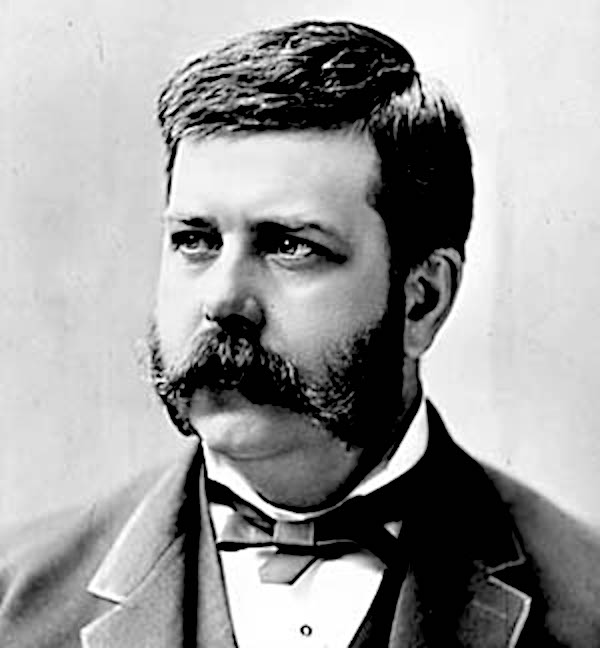
The
electrical power generation industry began when light bulbs and other
devices that needed reliable energy supplies were invented. Direct current
(DC) systems were not at that time suitable for transmission of electricity
over long distances. Tesla came up with an alternating current (AC) system
that he patented.
George Westinghouse Jr. was one of the top innovators of his time, first as an inventor himself, and later guiding other inventors and the direction of Westinghouse Electric Company. Later in his life he dropped the "Jr" and is known today simply as "George Westinghouse".
ELECTRICAL DEVELOPMENTS
By the early 1880s Edison's DC systems had just dazzled the world, however in Europe AC power was in it's infancy and it began to capture the attention of American electrical engineers. While
Thomas Edison, Brush, Sprague and Thomson had a stranglehold on DC systems, Westinghouse sensed opportunity with alternating current.
Westinghouse bought into the AC world by buying patent rights to the Gaulard and Gibbs transformer. He hired William Stanley and lawyer Franklin Pope to develop a more useful and reliable transformer. Simultaneously other companies in North America like Thomson-Houston in Lynn, MA also bought AC apparatus from Europe to try to develop their own systems. Westinghouse funded Stanley's experiments in Great Barrington in 1886. The results shocked the world as Stanley created the first reliable transformer and demonstrated lighting the downtown. George Westinghouse came up to see the system personally and was pleased.
Westinghouse hired Oliver Shallenberger to develop the induction meter which allowed them to measure AC
power, to able to bill customers for the power being supplied.
In 1888 Westinghouse joined the polyphase AC scene when it purchased rights to the induction motor. The induction motor was able to start itself up which is something that DC had an advantage with before. Galileo Ferraris developed the polyphase induction motor and
Nikola Tesla created his own design the same year. Westinghouse bought rights to both to be sure and proceeded to develop AC power sites as an experiment.
CURRENT WARS - AC Vs DC
Westinghouse was able to buy AC patents developed in Europe and nationally and was able to attract talent. Edison fired many great engineers for talking about AC development, people like CS Bradley who developed the first 3-phase generator. While Edison tried to market DC the AC scene was creeping up all over the world.
The end of the War of Currents was at the International Electrotechnical Exposition in Frankfurt Germany in 1891. This event and demonstration of AC power proved to be the definitive moment. After this JP Morgan swooped in and consolidated many of Edison's companies along with his competitors like Thomson-Houston and Brush to form General
Electric. General Electric proved to be a formidable competitor against Westinghouse since it had many of it's own AC experts and was actively recruiting young electrical engineers from Europe. Westinghouse hired Benjamin G. Lamme in 1889 and soon he lead AC power development at the company.
Westinghouse Rises: Timeline of landmark AC Power Plants
1886 - Great Barrington, MA
1890 - Willamette Falls (Oregon City Falls), OR
1891 - Telluride, CO (Ames Power Plant)
1893 - World's Columbian Exposition
1895 - Willamette Falls Powerhouse B
1895 - Niagara Falls, NY (Adams Power Station)
1899 - Steam turbine AC generator at the Hartford Electric Company
Steam Turbines:
The two known ways to produce electric power in the early years were hydro power and reciprocating steam engines
Westinghouse knew that reciprocating steam engines were inherently inefficient when he was still a teenager. Finally in 1884 Charles A. Parsons developed a practical steam turbine. Westinghouse was quick to buy up rights to the turbine and start developing it further. By 1898 he had a 300 kW steam turbine powering part of his air brake factory.
FINAL YEARS
George Westinghouse stepped down from control of the company in 1907. His health quickly declined and he died in 1914 in New York City.
The Westinghouse Company lived on until the 1980s and 90s when many divisions of the company were sold off and the company shifted into media (CBS Corporation). The company lives on in name, and it's nuclear division remains, however the bulk of the company and its manufacturing line is now closed.
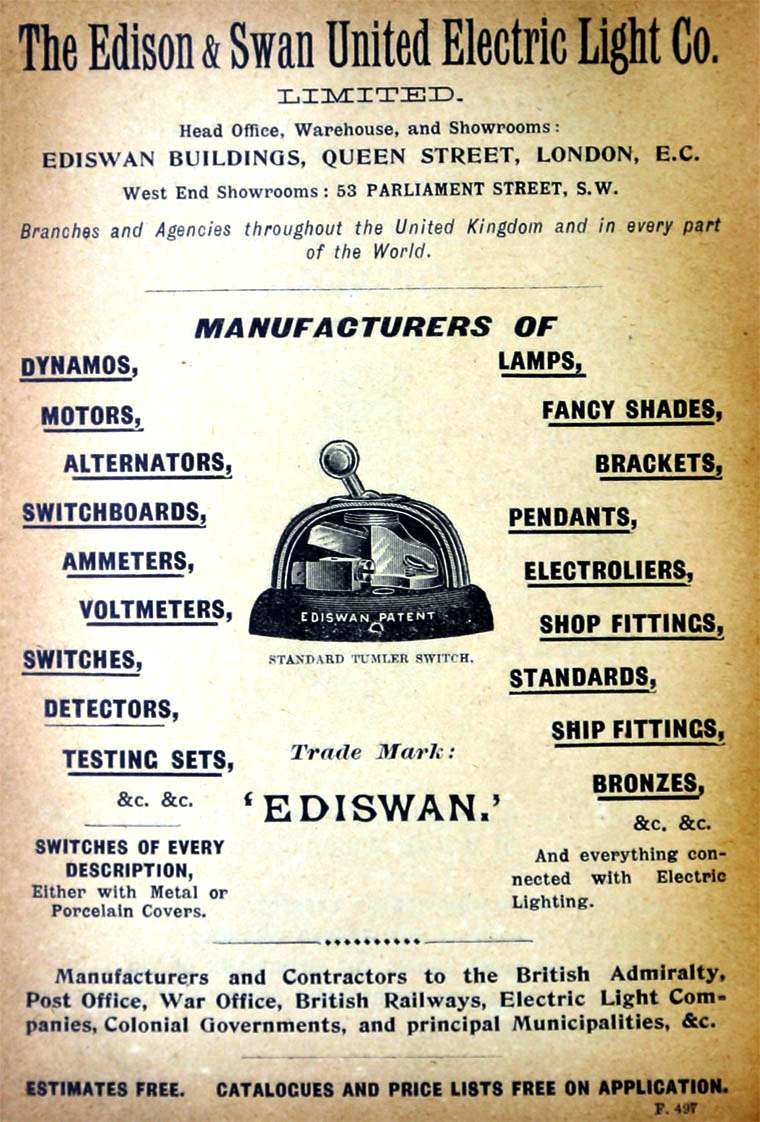
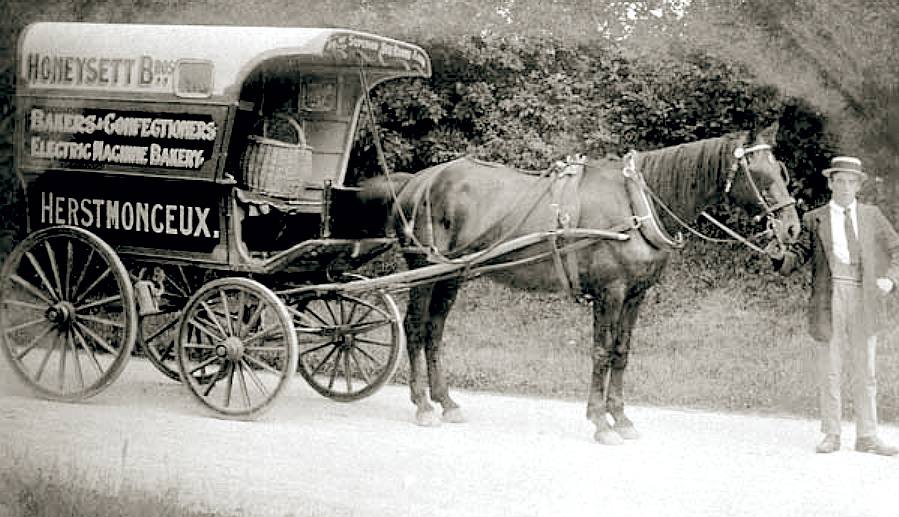
SWITCHES
& BULBS - Where would we be without electric lighting. A battle
royal ensued in the law courts and Thomas Edison and Joseph Swan slogged it
out in the London High Court, ending with the combatants working together as
the Edison & Swan United Electric
Light Co. ELECTRIC
BAKERY - The earliest surviving generating station, dating from C. 1900,
with battery based load levelling as the core technology, coupled to a 48 volt DC generator, is in the little village of Herstmonceux,
Sussex.
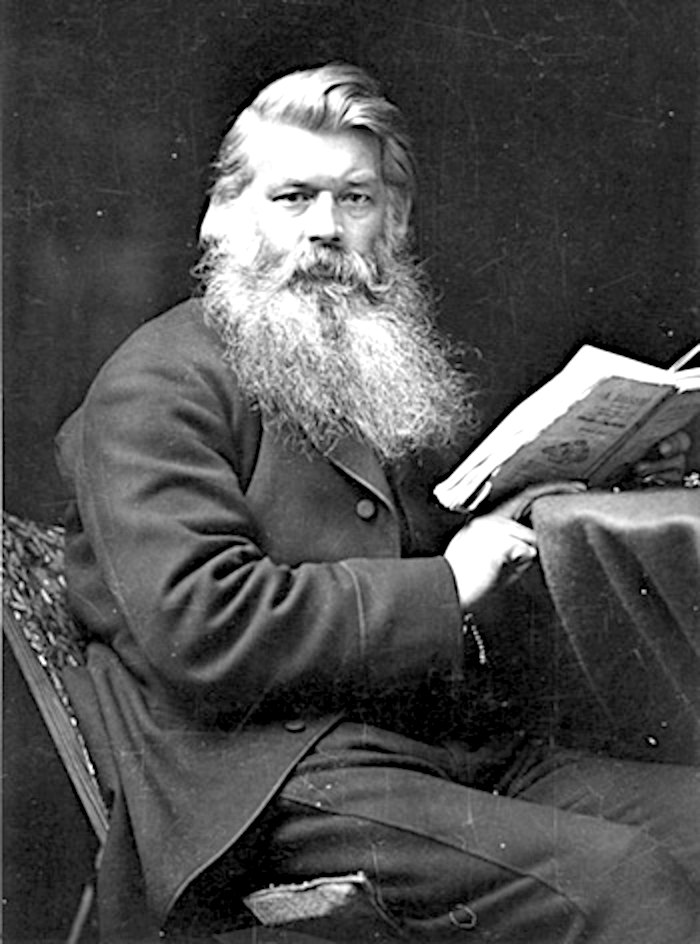
England's Joseph W. Swan, was a chemist, who experimented in the 1850s and 60s with carbon filaments. His early efforts failed however, because the vacuum pumps of those years could not remove enough air from the lamps. By the mid-1870s better pumps became available, and Swan returned to his experiments.
By late 1878, Swan reported success to the Newcastle Chemical Society and in February 1879 demonstrated a working lamp in a lecture in Newcastle. His lamps contained the major elements seen in Edison's lamps that October: an enclosed glass bulb from which all air had been removed, platinum lead wires, and a light-emitting element made from carbon. Why then is
Edison generally credited (outside Britain) with inventing the light bulb?
Like other early inventors, Swan used a carbon rod with low electrical resistance in his lamp. Due to the relationship between resistance and current, a low resistance element required lots of current in order to become hot and glow. This meant that the conductors bringing electricity to the lamp would have to be relatively short (or impossibly thick), acceptable for an experiment or demonstration, but not for a commercial electrical system.
Made from an arc-lamp element, Swan's carbon rod gave off light but did not last very long. Gasses trapped in the rod were released when the lamp was activated, and a dark deposit of soot quickly built up on the inner surface of the glass. So while Swan's lamp worked well enough for him in a demonstration, it was impractical in actual use.
Edison realized that a very thin "filament" with high electrical resistance would make a lamp practical. High resistance meant only a little current would be required to make the filament glow and allow much longer copper lines of modest size to be used. Edison's Bristol-board lamps of December 1879 lasted about 150 hours, and his bamboo lamps of early 1880 lasted 600 hours.
It is for this realization about high resistance, and for his conception of the lamp as only one part of an integrated system, that Edison is generally credited with inventing the first practical incandescent lamp.
Swan did not lose out entirely however. While it appears that he never sent the letter that he wrote to Edison (cited above), his patents were strong enough to win in British courts. After another lamp maker lost a patent suit to Swan, the Edison interests decided to negotiate rather than risk losing a suit of their own.
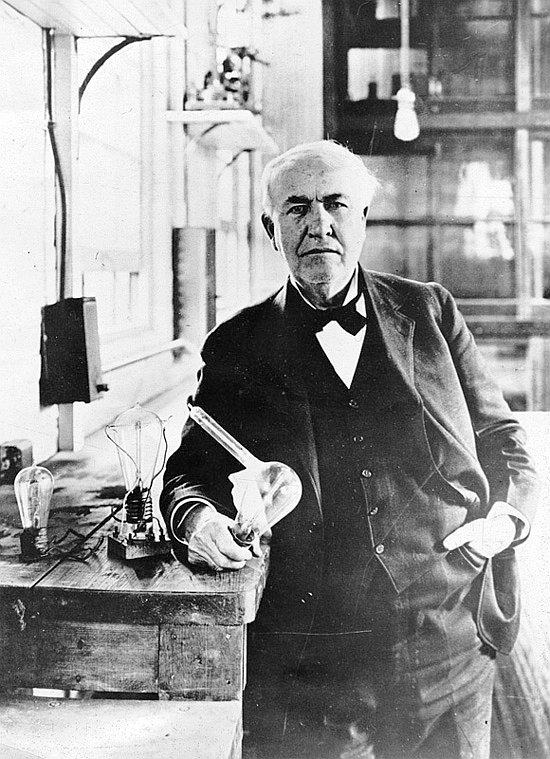
The
electrical power generation industry began when light bulbs and other
devices that needed reliable energy supplies were invented. Telephones and
televisions all needed electricity.
It is painful to cast aspersions on the reputation of one of America's heroes, but Edison, who patented his bulb in 1879, improved on a design that British inventor Joseph Swan had patented 10 years earlier.
Improvement patents, are however, still inventive steps and legitimate
development.
Thomas
Alva Edison is held to be the inventor of the electric
light bulb, though Sir
Joseph Wilson Swan's, patent predated Edison's US patent, in
England. Eventually, the two men became partners, with the Edison & Swan
United Electric Light Co. (Ediswan Lighting Company).
Today,
light bulbs are considered to be wasteful of energy, creating a lot of heat
for the light output. They are being replaced by LEDs, as part of the fight
against climate change, and
simply to cut the cost of lighting.
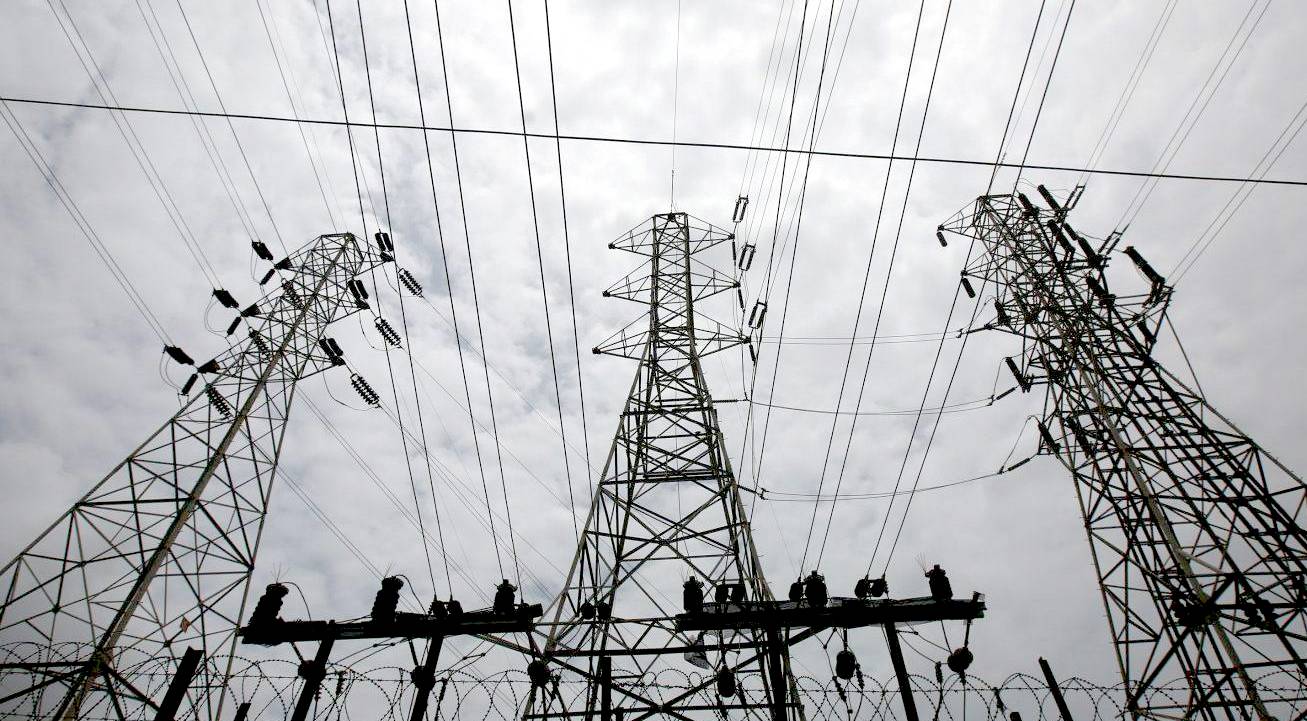
The
electrical power generation industry began when light bulbs and other
devices that needed reliable energy supplies were invented. Telephones and
televisions all needed electricity.
Please
use our A-Z
INDEX to navigate this site
This
website is provided on a free basis to
promote zero emission transport from renewable energy in Europe and Internationally.
Copyright ©
Universal Smart Batteries and Climate Change Trust 2022. Solar
Studios, BN271RF, United Kingdom.
|





